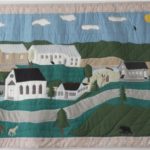NATIVE AMERICAN HERITAGE MONTH
November was designated by Congress in 1990 as American Indian and Indigenous Heritage Month to celebrate the accomplishments of the peoples who were the original inhabitants and stewards of what is now the United States. It is commonly referred to as Native American Heritage Month, but also as American Indian and Alaska Native Heritage Month. The month is a time to celebrate rich and diverse cultures, traditions, and histories; acknowledge the important contributions of Native people; and raise public awareness about the unique challenges Native people have faced both historically and in the present, and the ways in which tribal citizens have worked to conquer these challenges.
Why is it important to recognize your Native American Heritage?
(published on Virginia Nottoway Indian Tribe website)
Who we are today, as your neighbors, your schoolmates, your church members and your co-workers is a reflection of who our ancestors were and how they interacted with other Virginians in the past. Being Native American in Virginia is much more than wearing traditional regalia and attending powwows. It involves bringing a different and more balanced perspective to our history, our present and our future.
Much was lost through Race Laws and through the errors of census takers during the 1800’s who identified Nottoway Indians as Mulatto, White or Black. In 1924, the Racial Integrity Act made it illegal to identify as Indian under penalty of being arrested and other negative ramifications. Thus, many Native Americans were incorrectly identified by the Law and their neighbors as either White or African American. Native Americans have lived through decades of legal and historical oppression. Survival was achieved by living quietly.
TRIBAL NATION CULTURAL CENTERS IN VIRGINIA
Chickahominy: The people of the coarse pounded corn. The tribe is of the Algonquin people, one of the largest cultural and linguistic groups in North America. Algonquin lands once stretched all the way from the southeastern coastal plain to near the Arctic Circle. The Chickahominy originally lived in permanent villages along the Virginia river that still bears our name.
Eastern Chickahominy: The Chickahominy Indian Tribe migrated from King William County back to the area around the Chickahominy River in New Kent and Charles City Counties. An 1870 census showed an enclave of Indians in New Kent County which is believed to be the beginning of the Chickahominy Indians Eastern Division. Records were destroyed when the New Kent County courthouse was burned. A State census is the only record from this time.
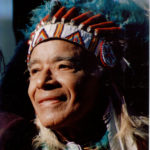 Mattaponi: The “people of the river.” The tribe has been in its original region for over 15,000 years. It is one of the six original tribes of the Powhatan Confederacy. The Mattaponi Indian Reservation was confirmed to the Mattaponi Indians in 1658 by an act of the Colonial Government. The Mattaponi River remains the lifeblood of the tribe and an important part of its culture.
Mattaponi: The “people of the river.” The tribe has been in its original region for over 15,000 years. It is one of the six original tribes of the Powhatan Confederacy. The Mattaponi Indian Reservation was confirmed to the Mattaponi Indians in 1658 by an act of the Colonial Government. The Mattaponi River remains the lifeblood of the tribe and an important part of its culture.
Monacan: In 1994, the tribe began negotiating with the Episcopal Diocese of Southwest Virginia to open a tribal museum at the mission site, and in 1995 the Church returned the deed to 7.5 acres of its property to the tribe. In 1997, the tribe petitioned the Virginia Council on Indians to request legislation enacting corrections to birth certificates and other official documentation at no charge to tribal members. With the passing of this new bill, nearly a century of state-sanctioned racial oppression ended for Monacan people.
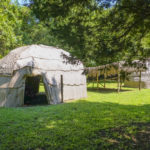 Nansemond: The indigenous people of the Nansemond River, a 20-mile long tributary of the James River in Virginia. Tribal members lived in settlements on both sides of the Nansemond River where they fished (with the name “Nansemond” meaning “fishing point”), harvested oysters, hunted, and farmed in fertile soil.
Nansemond: The indigenous people of the Nansemond River, a 20-mile long tributary of the James River in Virginia. Tribal members lived in settlements on both sides of the Nansemond River where they fished (with the name “Nansemond” meaning “fishing point”), harvested oysters, hunted, and farmed in fertile soil.
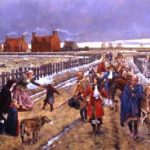 Nottoway: The tribe lives in the traditional territorial area of the historic Nottoway Tribe, including Southampton County into Surry County and the Tidewater region. In numerous records of Colonial Virginia (acquired by the Library of Virginia from historical archives in England), Nottoway Indians are shown to have had a central role in trade, battles and diplomacy with Indian Tribes from outside the region.
Nottoway: The tribe lives in the traditional territorial area of the historic Nottoway Tribe, including Southampton County into Surry County and the Tidewater region. In numerous records of Colonial Virginia (acquired by the Library of Virginia from historical archives in England), Nottoway Indians are shown to have had a central role in trade, battles and diplomacy with Indian Tribes from outside the region.
Pamunkey: The Pamunkey Indian Museum and Cultural Center is a tribal museum located on the Pamunkey Indian Reservation. The museum focuses on the Pamunkey Indian Tribe’s history and way of life from 12,000 years ago through to the present. Glass display cabinets highlight the lifeways of the tribe and are the centerpiece of the museum.
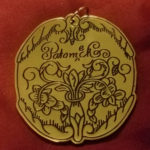 Patawomeck: The tribe is based in Stafford County, along the Potomac River (Patawomeck is another spelling of Potomac). the tribe numbers approximately 2300 members. Eighty percent live within 10 miles of their historic village. Indian descendants of the survivors of the 1666 massacre make up the current membership. The Patawomeck descendants have been a close-knit group over the past few centuries, carrying on many traditions and skills of their Indian ancestors.
Patawomeck: The tribe is based in Stafford County, along the Potomac River (Patawomeck is another spelling of Potomac). the tribe numbers approximately 2300 members. Eighty percent live within 10 miles of their historic village. Indian descendants of the survivors of the 1666 massacre make up the current membership. The Patawomeck descendants have been a close-knit group over the past few centuries, carrying on many traditions and skills of their Indian ancestors.
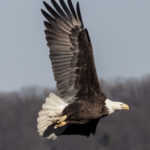 Rappahannock: From the place where the water rises and falls, the Rappahannocks host their traditional Harvest Festival and Powwow annually at their cultural center in Indian Neck, Virginia. They have a traditional dance group called the Rappahannock Native American Dancers and a Drum group called the Maskapow Drum Group, which means “Little Beaver” in the Powhatan language. Both groups perform locally and abroad in their efforts to educate the public on Rappahannock history and tradition.
Rappahannock: From the place where the water rises and falls, the Rappahannocks host their traditional Harvest Festival and Powwow annually at their cultural center in Indian Neck, Virginia. They have a traditional dance group called the Rappahannock Native American Dancers and a Drum group called the Maskapow Drum Group, which means “Little Beaver” in the Powhatan language. Both groups perform locally and abroad in their efforts to educate the public on Rappahannock history and tradition.
Upper Mattaponi: In 1608, Captain John Smith’s “Map of Virginia” identified the village of Passaunkack at the location of the present-day Upper Mattaponi. In 1676, the August Hermann Map shows several Indian houses along the Upper Mattaponi River directly at the location of the Upper Mattaponi people, identifying the region as Indian land. The oldest surviving King William County records dated 1885 list non-reservated Indians bearing the surname Adams living in a settlement known as Adamstown. The name most likely originated with James Adams who served as an official interpreter between the British and Indians living in this area between 1702 to 1727. The Adamstown band became officially known as the Upper Mattaponi Indian Tribe in 1921.
